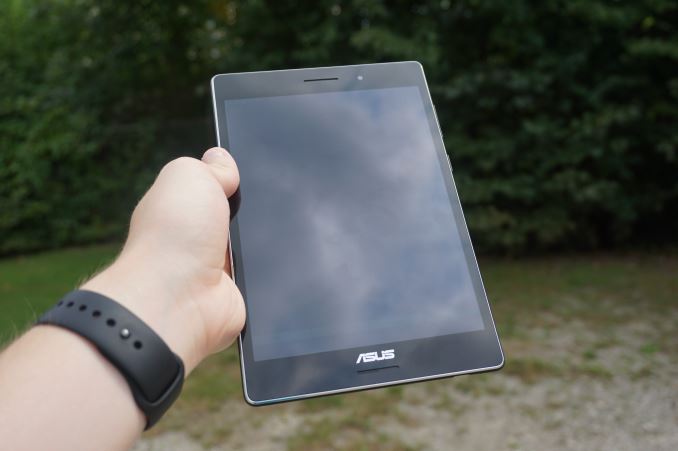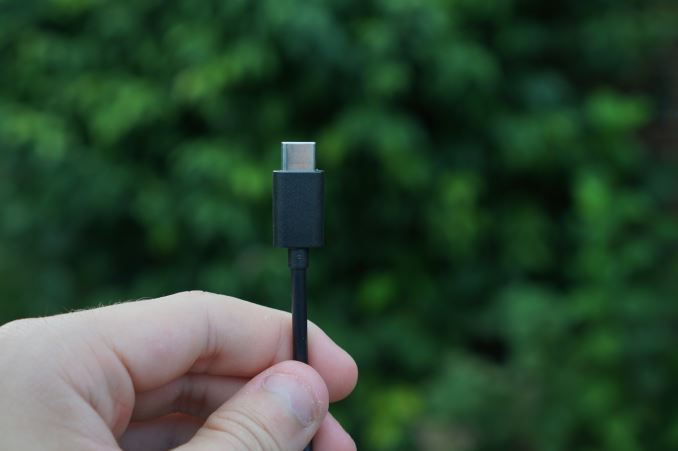The ASUS ZenPad S (Z580CA) Review
by Brandon Chester on August 31, 2015 8:00 AM EST
When I think of ASUS and Android, the first thing that comes to mind is their past portfolio of Android tablets. ASUS has been making Android tablets since the first wave of Android Honeycomb tablets hit the market. Back then, ASUS's point of differentiation from all the other Android tablets with essentially the same Tegra 2 hardware platform was their attachable keyboard dock. One could argue that ASUS really pioneered the 2-in-1 tablet form factor with their Transformer tablets.
While ASUS continued to release a number of additional Transformer tablets with updated specifications for some time, it has been a while since we've seen any new high end tablets from the company. Recent offerings have usually been more budget oriented devices like the MeMO Pad series, or the hard to find ASUS PadFone, with the spot for a more standard tablet being left unfilled.
Today's review takes a look at a tablet that doesn't pick up where the Transformer series left off, but instead kicks off a new line of tablets from ASUS under the ZenPad brand. There are a few different ZenPad tablets on the market, with multiple SKUs for each product creating even more versions. The tablet I'm looking at today is the ASUS ZenPad S, and more specifically, the ZenPad S Z580CA, which is ASUS's most high end tablet offering. Since the ZenPad S comes in two different versions I've laid out both of their specifications in the chart below so you can get an idea of how the two devices differ from each other.
| ASUS ZenPad S 8 (Z580C) | ASUS ZenPad S 8 (Z580CA) | |
| SoC | Intel Atom Moorefield Z3530 4x Silvermont @ 1.33GHz |
Intel Atom Moorefield Z3580 4x Silvermont @ 2.33GHz |
| GPU | PowerVR G6430 @ 457MHz | PowerVR G6430 @ 533MHz |
| RAM | 2GB LPDDR3 | 4GB LPDDR3 |
| NAND | 32GB + microSDXC | 64GB + microSDXC |
| Display | 7.85" 2048x1536 IPS LCD | |
| Dimensions | 203.2 x 134.5 x 6.6mm | |
| Mass | 298g | |
| Camera | 2MP Front-facing 5MP Rear-facing |
5MP Front-facing 8MP Rear-facing |
| Battery | 15.2Wh | |
| OS | Android 5.0 Lollipop with ASUS Zen UI | |
| Other Connectivity | 802.11b/g/n + BT 4.1, GNSS, 3.5mm audio | 802.11a/b/g/n/ac + BT 4.1, GNSS, 3.5mm audio |
| USB Connector | Micro USB | USB Type-C |
| Price | $199 USD | $299 USD |
There are two versions of the ZenPad S. The less expensive model is priced at $199 USD, while the more expensive model that I am reviewing is $299 USD. This is not unlike the price split between the two versions of the ZenFone 2. However, while the two versions of the ZenFone were differentiated only by their RAM, NAND, and included charger, the two models of the ZenPad S have more differences than similarities as far as their specifications go.
What's shared between both devices is the 7.85" 2048x1536 display. ASUS advertises it as 8.0" but measurements of the display's diagonal show that there is some rounding going on. In addition to the display, both devices have a 15.2Wh battery. At $100 more, the ZenPad Z580CA doubles your RAM and storage to 4GB and 64GB respectively, increases the resolution of both cameras, bumps the max CPU clock by 1GHz and max GPU clock by 76MHz, and adds 802.11ac support.
The one thing that sets the ZenPad S Z580CA apart from most other devices is its use of the new USB Type-C connector, along with support for USB 3.0 speeds of 5Gbps (Superspeed). While we have seen USB 3.0 featured on some past devices such as the Galaxy Note 3, the large size and unsightly appearance of the USB 3.0 Micro-B connector resulted in it receiving almost no market adoption. It's important to note that just because a device uses the USB Type-C connector does not mean that it supports USB 3.1 Gen 2 (Superspeed+) along with all the USB alternate modes for networking or display interfaces. With the ZenPad S Z580CA only supporting USB data, you cannot do video out or use any other USB alternate modes. Such features will have to wait for future SoCs and controllers with USB 3.1 and USB alt mode support.
As for the connector, Type-C is slightly larger than your standard Micro-B port in all dimensions, but it's reversible, more durable, and maintains a much stronger connection to a device. You can insert it in two orientations, and when you push it in there's a click to let you know that it connected. Some users will see the adoption of USB Type-C as a nuisance, as it will prevent them from using existing cables to charge the tablet or transfer files. I personally recognize this as an unavoidable transition period, as there's no chance of every vendor and user in the world deciding to move to Type-C all at once. It's obviously a bit of an annoyance to be unable to use existing Micro-B cables, but I believe the advantages are worth it.
The ZenPad S uses ASUS's ZenUI skin for Android. It's basically the exact same UI as on the ZenFone 2, but with some layout and app design changes to work better on the larger display. For a look at ZenUI I recommend looking at the software section of my ZenFone 2 review, as I won't be discussing it in this review due to it being mostly redundant.











114 Comments
View All Comments
PixyMisa - Monday, August 31, 2015 - link
I have two Nexus 7 2013s (one died and wouldn't charge any more, but a wireless charging pad brought it back to life).Still holding on and waiting for something better that doesn't cost three arms and a leg.
I also have an Xperia Z Ultra that I picked up cheap. That's not bad, but a little on the small side for tablet use.
Sunburn74 - Monday, August 31, 2015 - link
Does Anandtech plan to update the review once a stylus is available? For some of us, the stylus input would be a real deal maker (or breaker if it is subpar).Brandon Chester - Monday, August 31, 2015 - link
I specifically asked ASUS to send the stylus and cover if they could, but all I got was the tablet. I have to send this back so I doubt I'll ever be able to look at the stylus. I really wanted to.vladx - Monday, August 31, 2015 - link
What nonsense is this about the camera? The day photo definitely looks the best along with S6 Edge one. Saying the iPad one looks better is a joke.The rumours are true, this site is more and more biased by each day passed.
Brandon Chester - Monday, August 31, 2015 - link
I don't know if you viewed them at full size or not but ASUS's camera processing has been widely panned by pretty much every site that looked at the Zenfone 2, and it is literally unchanged here. If there's some level of bias there then it must exist at every tech site ever.The image quality is not even remotely comparable to the shot from the S6 Edge. A good area to examine is the walls of the school, they're completely destroyed by heavy noise reduction to the point where the lines start curving and shifting. It's just not a good image.
DanNeely - Tuesday, September 1, 2015 - link
It's really that the problems are only obvious in the full size image. The resized images in the gallery aren't large enough to see the problems.This's a sitewide comment, and not directed at you personally; but people who look at the full size images as well as the ones in the gallery are probably in the minority. I think a set of 1:1 crops of a detail area or two that make things like the destructive processing the Asus does readily apparent would really make problems more apparent.
eek2121 - Tuesday, September 1, 2015 - link
I didn't even finish reading the first page of this article and I thought to myself...ASUS made the nexus 7. Why the hate?Michael REMY - Tuesday, September 1, 2015 - link
as Anandtech still continue to ignore sony xperia tablet, i can not consider seriously this review of the asus zenpad. i trust all the review of Anandtech else the tablets ones! I hope one day you could try or review the xperia z3 compact tablet or even the xperia z4 tablet because it changes all the done and the way to judge the other tablets on the market.DanNeely - Tuesday, September 1, 2015 - link
It's not AT ignoring the Sony Tablet. It's Sony ignoring the tech press. AT (among others) have regularly asked for review samples of various products. Sony's almost never willing to provide them. As a result they get next to no press coverage beyond demos at big shows and product release announcements. That's entirely on them.MrSavage - Tuesday, September 1, 2015 - link
People running big websites aren't capable of buying a review unit off a store shelf? Imagine that. Having to pay for a review unit? Perhaps giving it away later as a giveaway contest? Nobody knows about tax write offs? Sure, if it's not free then we don't review it. If it's the best tablet on the market who cares. We won't inform our site visitors of that great product because there was no freebie sent out. Credibility wise, I would not be saying this is great or the best because I chose not to review other top tablets because I didn't get a free one in the mail to review. I wish sites were open about the bias or friendly handshake agreements. The best tablet of the free ones sent out to big websites. Not the best, but just the best from the ass kissing companies who sent out review units. Sad excuse in my books. I call it a disservice to my visitors if that's my mentality.